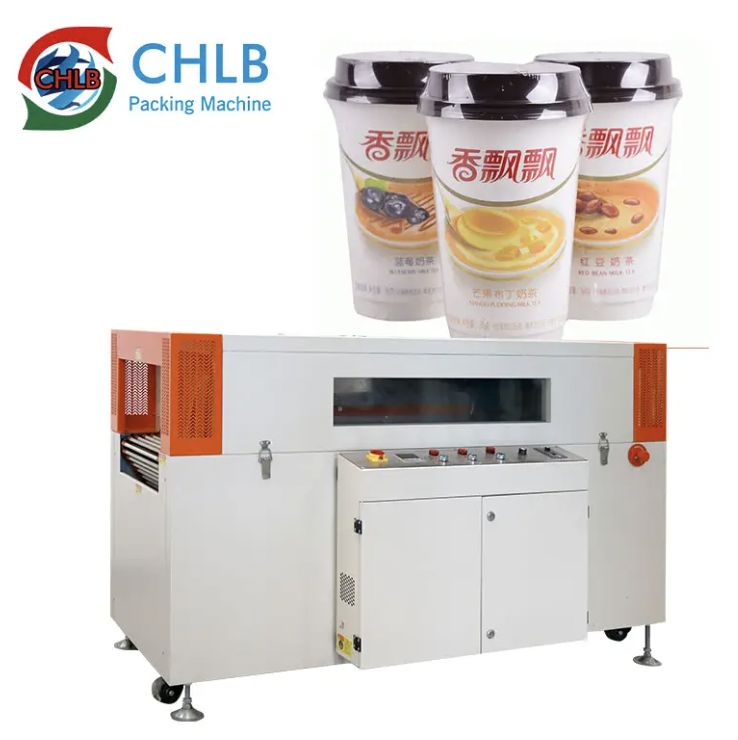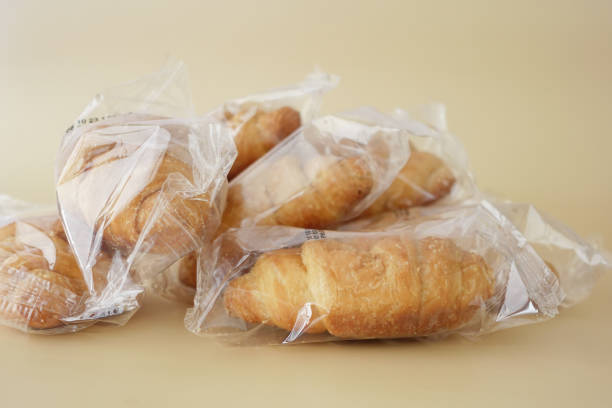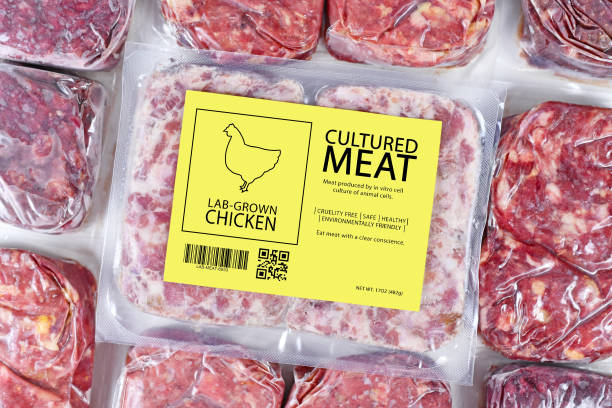In der heutigen schnelllebigen Fertigungs- und Verpackungsindustrie, Effizienz und Produktpräsentation spielen entscheidende Rollen. Schrumpfverpackungsmaschinen haben sich als unverzichtbare Werkzeuge entwickelt, Bieten Sie eine zuverlässige Methode für die Verpackung verschiedener Produkte mit Geschwindigkeit und Präzision an. Diese Anleitung befasst sich mit der Schrumpfverpackungsmaschine, Erforschung seiner Typen, Komponenten, Materialien, Verfahren, Vorteile, und Überlegungen zur Auswahl der richtigen Maschine.
Was ist Schrumpfpackung?
Die Schrumpfpackung ist ein Verpackungsprozess wo ein Wärmeschrumpffilm um ein Produkt oder eine Produktgruppe aufgetragen wird. Der Film wird dann erhitzt, und es dazu veranlasst, die Produkte fest zu schrumpfen, Erstellen eines sicheren und visuell ansprechenden Pakets. Diese Methode schützt nicht nur den Inhalt vor Staub, Feuchtigkeit, und Manipulationen, aber auch ihre Regalbeschaffung verstärken.
Arten von Schrumpfen -Verpackungsmaschinen

Handbuch Schrumpfwickmaschinen
Grundprinzipien
Bei manuellem Schrumpfverpackungsmaschinen muss die Betreiber Produkte manuell in den Film einbringen und dann den Film mit einer Heißluftpistole oder einem Heizelement versiegeln und verkleinern. Diese Maschinen sind ideal für kleine Vorgänge, bei denen das Volumen relativ gering ist und die Verpackungsgröße und -form unerlässlich ist.
Anwendungen in kleinen Operationen
Sie werden häufig in Einzelhandelsumgebungen verwendet, kleine Unternehmen, und Startups, die nach kostengünstigen Verpackungslösungen suchen, ohne dass eine Hochgeschwindigkeitsautomatisierung erforderlich ist.
Halbautomatische Schrumpfen-Verpackungsmaschinen
Grundprinzipien
Semiautomatische Maschinen automatisieren den Versiegelungs- und Schrumpfungsprozess, wobei noch eine manuelle Belastung von Produkten erforderlich ist. Sie sind mit Versiegelungsstäben ausgestattet und Tunnel erhitzt, die den Film effizient versiegeln und verkleinern. Semiautomatische Maschinen eignen sich für mittelgroße Operationen, bei denen moderate Produktionsvolumina und Konsistenz in der Verpackung erforderlich sind.
Anwendungen in mittleren Operationen
Diese Maschinen sind in Branchen wie bevorzugt wie Essen und Getränk, Kosmetika, Und Arzneimittel für ihre Fähigkeit, unterschiedliche Verpackungsgrößen und Formen mit verbesserter Geschwindigkeit und Effizienz im Vergleich zu manuellen Maschinen zu handhaben.
Automatische Schrumpfen -Wickelmaschinen
Grundprinzipien
Automatische Schrumpfen -Wickelmaschinen Integrieren Sie vollständig automatisierte Systeme zur Produktzufuhr, Filmverpackung, Versiegelung, und schrumpfen. Sie verwenden Förderer, Fortgeschrittene Versiegelungsmechanismen, und Tunnel erhitzen, um den Verpackungsprozess zu optimieren. Automatische Industrie-Schrumpf-Wrap-Maschine sind für groß angelegte Operationen ausgelegt, die einen hohen Durchsatz und eine konsistente Verpackungsqualität fordern.
Anwendungen in groß angelegten Operationen
Branchen wie das Fertigung, Logistik, und Vertrieb stützt.
Schlüsselkomponenten einer Schrumpfmaschine
Heizelemente
Schrumpfverpackungsmaschinen verwenden Heizelemente oder Wärme -Tunnel, um den Wärmeschrumpffilm zu aktivieren, und es gleichmäßig um die verpackten Produkte schrumpfen lassen. Die Temperaturkontrolle ist entscheidend, um eine optimale Schrumpfung zu erreichen, ohne die Produktqualität zu beeinträchtigen.
Fördersysteme
Fördersysteme transportieren Produkte durch den Schrumpfverpackungsprozess, Sicherstellung kontinuierlicher und effizienter Verpackungsvorgänge. Sie sind in verschiedenen Konfigurationen erhältlich, um verschiedene Produktgrößen und Verpackungsgeschwindigkeiten aufzunehmen.
Versiegelungsmechanismen
Versiegelungsmechanismen wie Dichtstangen oder Kiefer tragen Wärme und Druck auf, um stark zu erzeugen, luftdichte Dichtungen auf dem Hitzeschrumpffilm, Sicherung der verpackten Produkte und Verbesserung der Paketintegrität.
Kontroll systeme
Moderne Schrumpfen -Verpackungsmaschinen sind mit fortschrittlichen Steuerungssystemen ausgestattet, die die Temperatur regulieren, Fördergeschwindigkeit, und andere Parameter, um konsistente und zuverlässige Verpackungsergebnisse zu gewährleisten. Benutzerfreundliche Schnittstellen vereinfachen den Maschinenbetrieb und die Fehlerbehebung.
Materialien, die bei Schrumpfenverpackung verwendet werden

PVC (Polyvinylchlorid)
PVC -Schrumpffilme sind bekannt für ihre Klarheit und Flexibilität, Sie für Verpackungsprodukte mit unregelmäßigen Formen oder Größen geeignet machen. Sie bieten gute Schrumpfungseigenschaften und werden häufig in Einzelhandelsverpackungen verwendet.
POF (Polyolefin)
POF -Schrumpffilme bieten hohe Klarheit und ausgezeichnete Siegelfestigkeit, Sie ideal zum Verpacken von Lebensmitteln zu machen, Elektronik, und pharmazeutische Produkte. Sie bieten einen überlegenen Punktionsbeständigkeit und sind mit Hochgeschwindigkeitsverpackungsmaschinen kompatibel.
SPORT (Polyethylen)
PE-Schrumpffilme sind vielseitig und kostengünstig, mit moderaten Schrumpfeigenschaften und einer guten Haltbarkeit anbieten. Sie werden häufig in industriellen Anwendungen für Verpackungsmassenwaren und unregelmäßig geformte Produkte verwendet.
Verrückungsverpackungsprozess
#1: Vorverarbeitung
Materialauswahl: Die Auswahl des richtigen Schrumpffilms ist entscheidend, basierend auf Produkteigenschaften, Verpackungsanforderungen, und Umweltfaktoren. Überlegungen sind die Filmdicke, Klarheit, und Schrumpfeigenschaften.
Vorbereitungsschritte: Die Vorbereitung von Produkten für die Verpackung von Schrumpfen beinhaltet die Organisation und Ausrichtung für effiziente Verpackungen. Dieser Schritt sorgt für eine reibungslose Verarbeitung und ein einheitliches Paket -Erscheinungsbild.
#2: Verpackung
Das Produkt platzieren: Produkte werden in den Schrumpffilm gegeben, entweder manuell oder automatisch, Abhängig vom Maschinenart. Richtige Ausrichtung und Abstand minimieren Filmabfälle und sorgen dafür,.
Versiegelung und Schrumpfen: Versiegelungsstäbe oder Versiegelungskiefer tragen Wärme und Druck auf den Film auf, Schaffung sicherer Robben um die Produkte. Wärme Tunnel dann gleichmäßig verkleinern den Film, Anpassung der Produktkonturen fest anpassen.
#3: Nachbearbeitung
Kühlung: Kühlstationen oder Umgebungsluft Abkühlen Sie die versiegelten und geschrumpften Pakete, Stabilisierung für den Handling und die Lagerung. Die kontrollierte Kühlung verhindert Verzerrungen und gewährleistet die Integrität der Paket.
Qualitätskontrolle: Inspizieren Sie fertige Pakete auf Seal Integrity, Ästhetik, Die Gesamtqualität stellt sicher, dass Produkte Verpackungsstandards und Kundenerwartungen entsprechen.
Vorteile der Verwendung von Schrumpfen -Verpackungsmaschinen

Kosteneffektivität
Schrumpfverpackungsmaschinen senken die Arbeitskosten im Zusammenhang mit manuellen Verpackungen und verbessern gleichzeitig die Verpackungseffizienz und die Materialverwendung. Sie minimieren auch Verpackungsabfälle, Zu den Gesamtkosteneinsparungen beitragen.
Flexibilität im Design
Die Fähigkeit, Produkte verschiedener Formen zu verpacken, Größen, und Konfigurationen verbessern Markenmöglichkeiten und Verbraucherattraktivität. Durch die Verpackung des Schrumpfens ermöglicht benutzerdefinierte Verpackungsdesigns, die Produktfunktionen vorstellen und die Präsenz des Regals verbessern.
Geschwindigkeit und Effizienz
Automatisierte Versiegelungs- und Schrumpfprozesse erhöhen die Verpackungsgeschwindigkeit und den Durchsatz im Vergleich zu manuellen Methoden erheblich. Diese Effizienz ist von entscheidender Bedeutung, um die Produktionsanforderungen mit hohen Volumen zu erfüllen und den Wettbewerbsvorteil aufrechtzuerhalten.
Verbesserter Produktschutz
Shrink -Wrap -Filme liefern eine Schutzbarriere gegen Staub, Feuchtigkeit, und Manipulationen, Erweiterung der Lebensdauer des Produkthaufens und der Gewährleistung der Produktfrische und der Integrität der Produkte während der Lagerung und des Transports.
Schrumpfpackung vs. Andere Verpackungsmethoden
Shrink Wraping bietet unterschiedliche Vorteile gegenüber herkömmlichen Verpackungsmethoden wie Pappkartons und manuelles Verpackung in Bezug auf die Kosteneffizienz, Produktsichtbarkeit, und Schutzfähigkeiten. Es bietet eine umweltfreundlichere Lösung mit reduziertem Materialabfall und verbesserter Produktpräsentation.
Auswählen der richtigen Schrumpfmaschine
Beurteilung Ihrer Bedürfnisse
Produktionsvolumen bewerten, Verpackungsanforderungen, und Raumbeschränkungen, um den am besten geeigneten Hochgeschwindigkeits -Schrumpf -Wrap -Maschine für Ihren Betrieb zu bestimmen.
Wichtige Funktionen, auf die Sie achten sollten
Betrachten Sie Faktoren wie die Maschinenkapazität, Filmkompatibilität, Leichte Wartung, und Integration mit vorhandenen Produktionsleitungen bei der Auswahl einer Schrumpfwickmaschine.
Budgetüberlegungen
Saldo-Voraussetzungskosten mit langfristigen Betriebsvorteilen und Kosteneinsparungen, um den ROI in Wärmeschrinkfilmverpackungsmaschine zu maximieren.
Ruf und Support des Herstellers
Wählen Ein seriöser Ablieferungslieferant für Schrumpfmaschinen Bekannt für qualitativ hochwertige Handwerkskunst, technisches Know -how, und reaktionsschneller Kundenservice, um eine zuverlässige Leistung und minimale Ausfallzeiten sicherzustellen.
Abschluss
Schrumpfverpackungsmaschinen haben die Verpackungsindustrie durch effizientes Anbieten der Verpackung revolutioniert, kostengünstig, und vielseitige Lösungen zum Schutz und Präsentieren von Produkten in verschiedenen Branchen. Die Typen verstehen, Komponenten, Materialien, Prozessfeinheiten, und Vorteile von Schrumpfen -Verpackungsmaschinen ermöglichen Unternehmen, fundierte Entscheidungen zu treffen und ihre Verpackungsfähigkeiten in einer wettbewerbsfähigen Marktlandschaft zu erhöhen.
FAQs auf Schrumpfenverpackungsmaschinen
1. Welche Branchen profitieren am meisten davon, Schrumpfen -Verpackungsmaschinen zu verwenden?
Schrumpfpackmaschinen werden in Branchen wie Lebensmitteln und Getränken weit verbreitet verwendet, Arzneimittel, Elektronik, Kosmetika, und Logistik für ihre Fähigkeit, Produkte mit verbessertem Schutz und Präsentation effizient zu verpacken.
2. Wie trägt die Schrumpfpapier zu nachhaltigen Verpackungspraktiken bei??
Schrumpfpackung reduziert Materialabfälle, Bietet recycelbare Filmoptionen, und optimiert Verpackungsmaterialverbrauch, Ausrichtung auf nachhaltige Verpackungsinitiativen in verschiedenen Branchen.
3. Was sind die wichtigsten Überlegungen bei der Wahl zwischen Handbuch?, halbautomatisch, und automatische Schrumpfmaschine zum Verpacken?
Betrachten Sie das Produktionsvolumen, Arbeitskosten, Verpackungsgeschwindigkeit, und Flexibilität bei Verpackungsdesigns, um den am besten geeigneten Maschinenart für Ihre betrieblichen Anforderungen und Ihr Budget zu bestimmen.
4. Wie kann ein Verpackungsverpackung die Produkte und Markenbeschwerde verkleinern??
Durch die Verpackung von Schrumpfungen kann klar sind, benutzerdefinierte Verpackungsdesigns, die Produktfunktionen und Brandingelemente vorstellen, Aufmerksamkeit der Verbraucher auf sich ziehen und die Präsenz des Regals verbessern.
5. Welche Rolle spielt die Temperaturkontrolle im Schrumpfverpackungsprozess??
Die präzise Temperaturkontrolle sorgt für eine gleichmäßige Schrumpfung des Films um die Produkte, Wartung der Paketintegrität, und Verbesserung der ästhetischen Attraktivität der verpackten Produkte.















